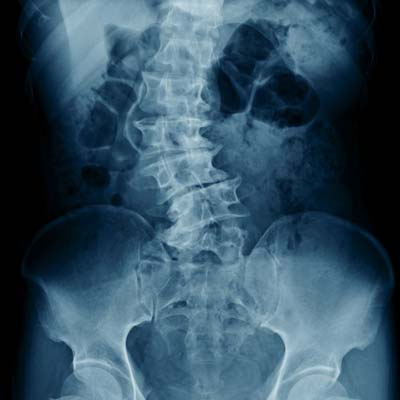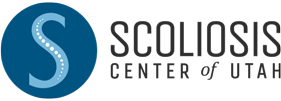Blogs
If I Have Bad Posture, Does That Mean I Have Scoliosis? Part 2

In the first part of this article, we discussed how many of the symptoms that people experience may be caused by subtle spinal misalignments that they haven’t previously noticed or been diagnosed with. Moderate to mild scoliosis, for example, is one such spinal misalignment. It’s common for moderate to mild scoliosis to go undiagnosed because it isn’t always visible in the body’s posture. As a result, scoliosis can go unnoticed well into adulthood, and even into later life, with a variety of unpleasant symptoms continuing to reappear (seemingly with no source). Read on to discover more symptoms that can arise as a result of undiagnosed scoliosis (and check Part 1 for more!)
Knee and Hip Pain
Do you have knee and hip pain? Knee and hip pain from scoliosis can accelerate the onset of arthritis and other joint problems. This is because when the spine is misaligned, it can cause the pelvis to become misaligned as well over time. This can place undue pressure on one or both of the hips and knees, causing excessive and accelerated wear and tear that leads to problems beyond pain and discomfort later.
Uneven Rib Cage, Hips, or Leg Length
Have you discovered that your rib cage, hips, or leg length are uneven? This is not uncommon, and it often stems from untreated scoliosis. Just like with knee and hip pain, a visibly uneven rib cage, hips, or leg length can point to an imbalance in the spine. When the spine is curved like an “S,” the pelvis can tilt laterally (from side to side). Everything connected to the pelvis—including the ribs (connected through the spine) and legs can likewise become imbalanced.
Neck Pain
Neck pain is one of the most common symptoms of untreated, mild scoliosis. The entire structure of the body struggles to compensate when the spinal structure is out of balance, and the neck is one of the first places to take the strain. Because the head is so heavy, when the spine is twisted (even in the case of mild scoliosis that has seemingly no other symptoms), the neck suffers. The spine is intended to help hold the weight of the head—in fact, the cervical spine is located in the neck—and when the lower/middle areas of the spine aren’t correctly aligned, the cervical spine is forced to carry the load of the head in a disproportionate way.
If you’re struggling with neck pain, it may be due to undiagnosed scoliosis. If you’ve always experienced a “weak neck” or collected tension in your neck area, this is all the more reason to visit a scoliosis chiropractor in Salt Lake City to receive x-rays and see if abnormal spinal curvature is the cause.
Rotating Joint Pain
If the joints that control rotation and movement in your body—those at the shoulders, in the elbows, and in the hips and knees—are causing you pain, it could be because of scoliosis. Scoliosis can tax the joints that are responsible for movement in the body. This is because when the entire structure of the skeletal system is imbalanced, as it is with scoliosis, the joints that are responsible for movement will sustain odd positions to try to restore balance to the body.
If you’re experiencing pain in your rotating socket joints and moving joints, this could be because of a global imbalance in the skeletal system caused by scoliosis.
Excessively Tight Muscles in the Neck & Back Region
Do you ever feel like your muscles are way too tense? If your neck and back muscles feel like they are constantly tight and taut, no matter how frequently they’re massaged, heated, or how often you rest—there’s a good chance that you’re experiencing this as a side effect of spinal misalignment. To assess the condition of the spine and determine whether it’s playing a role in your neck tightness, it’s important to receive x-rays.
The same goes for the back. If you notice that your back is extremely tense or taut in the muscle region, no matter how frequently you stretch or receive massages, then it’s possible that there is an abnormal curvature in the spine which is pressuring your muscles to compensate. The body will always try to return to balance, but the muscles aren’t strong enough to move your spine back into proper alignment without help and guidance.
Headaches and Eye Strain
Headaches are different than migraines but can be just as life-interrupting. Eye strain can accompany headaches, or exist on its own. Where there’s eye strain and headaches, there’s typically some kind of spinal imbalance. As nerve energy is impeded from flowing through the nerves surrounding the joints and spine, it’s common for nervous-system-related disruptions to arise. Mild to moderate scoliosis can present just enough abnormal spinal curvature to impede nerve flow through the spine.
“Okay, I think I may have mild to moderate scoliosis.”
Now that you’ve realized that some of the health challenges you thought were normal may not be normal, it’s time to address the root cause of the issues. At the Scoliosis Center of Utah, Dr. Katalina Dean focuses on treating your symptoms at the source—the imbalance in the spine. Come in today to get your x-rays, determine whether mild to moderate scoliosis is the source of your symptoms, and create your customized treatment plan! At the Scoliosis Center of Utah, we don’t treat without a complete understanding of your unique situation. This means that the first thing we do is complete a comprehensive examination to determine how your neuro-musculoskeletal system may be affecting your health. Book your appointment today to get started!
Do You Qualify for Care?
Schedule an Appointment Below
